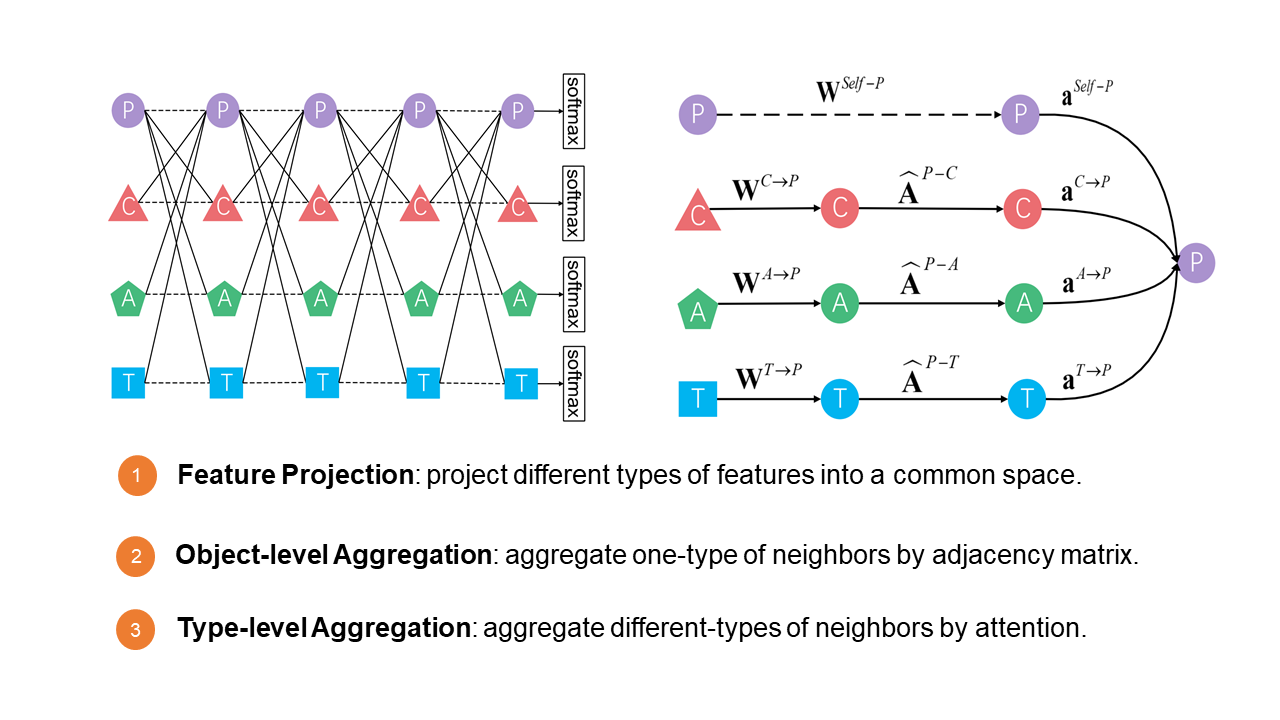Interpretable and Efficient Heterogeneous Graph Convolutional Network
Graph Convolutional Network (GCN) has achieved extraordinary success in learning effective task-specific representations of nodes in graphs. However, regarding Heterogeneous Information Network (HIN), existing HIN-oriented GCN methods still suffer from two deficiencies: (1) they cannot flexibly explore all possible meta-paths and extract the most useful ones for a target object, which hinders both effectiveness and interpretability; (2) they often need to generate intermediate meta-path based dense graphs, which leads to high computational complexity. To address the above issues, we propose an interpretable and efficient Heterogeneous Graph Convolutional Network (ie-HGCN) to learn the representations of objects in HINs. It is designed as a hierarchical aggregation architecture, i.e., object-level aggregation first, followed by type-level aggregation. The novel architecture can automatically extract useful meta-paths for each object from all possible meta-paths (within a length limit), which brings good model interpretability. It can also reduce the computational cost by avoiding intermediate HIN transformation and neighborhood attention. We provide theoretical analysis about the proposed ie-HGCN in terms of evaluating the usefulness of all possible meta-paths, its connection to the spectral graph convolution on HINs, and its quasi-linear time complexity. Extensive experiments on three real network datasets demonstrate the superiority of ie-HGCN over the state-of-the-art methods.
PDF Abstract

